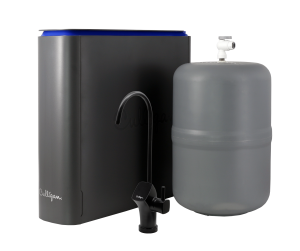Fluoride In Water
Many communities are taking a second look at fluoridation levels and motivations, and as the debate continues, it’s a good idea to know some basics about fluoride and its legacy in this country.
In 2015, the U.S. Department of Health and Human Services Agency (HHS) revised what defined acceptable fluoride levels:
“…water systems practicing fluoridation adjust their fluoride content to 0.7 mg/L (parts per million), as opposed to the previous temperature-dependent optimal levels ranging from 0.7 mg/L to 1.2 mg/L. There is no change regarding federal health officials’ strong and long-standing support regarding the value of fluoridation of drinking water.”
Since plant life relies heavily on water, most forms of plants and vegetation contain various levels of fluoride.
The most common use for artificially-created fluoride is the treatment of cavities and supporting dental health. Fluoride has been widely shown to prevent, and even reverse, tooth decay, and has been added to many city water supplies throughout the country as a result.

Fluoride In Tap Water: The Basics
After the link was found between its impact on dental health, fluoride made its first appearance in water supplies in Grand Rapids, Michigan in 1945 by a process called fluoridation. This involves adding fluoride to a municipal water supply at anywhere between 0.7 and 1.2 ppm (considered the safe and effective range for fluoride additives.) 0.7 is widely considered the safest level of concentration, as well as the optimal range for preventing tooth decay.
Despite the CDC’s strong backing, however, fluoride in drinking water is not without its critics. For example, recent studies have linked increased fluoride consumption in pregnant women to reduced IQ levels in their children, while other, less alarming studies simply fail to corroborate the dental hygiene benefits of fluoridated water.
Fluoride Removal: The Why And How
If your home has fluoridated water and you’re concerned about it, there are water treatment methods available that specifically address and remove water additives like fluoride.
Reverse osmosis systems for example, are designed to remove hard-to-filter chemicals like fluoride, that many other filtration devices in big box stores and online retailers cannot.
Solutions
Suggested Products

The Aquasential® Smart Reverse Osmosis Water Filter (RO)
- 7 stages of filtration and 12 filter options
- Certified for reduction of 58 contaminants
- 2-in-1 sediment and carbon filter screens out sediment and particles
- Can alert you and your dealer when service or filter replacements are needed

Facebook